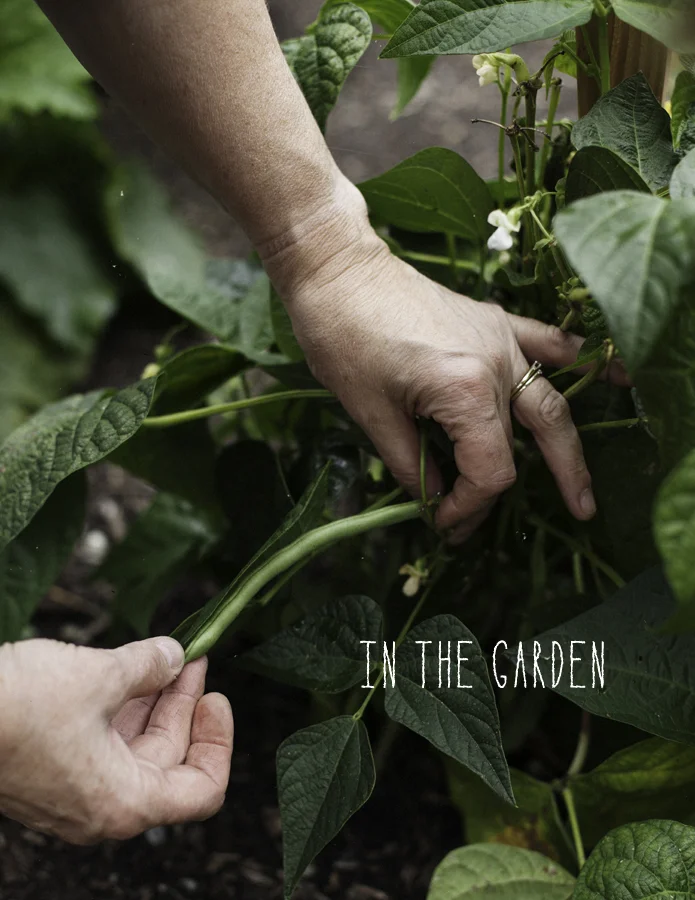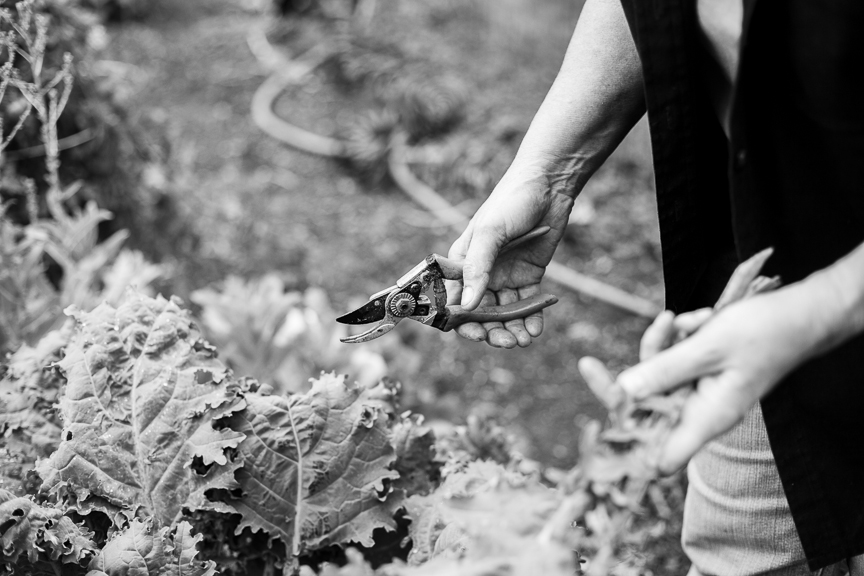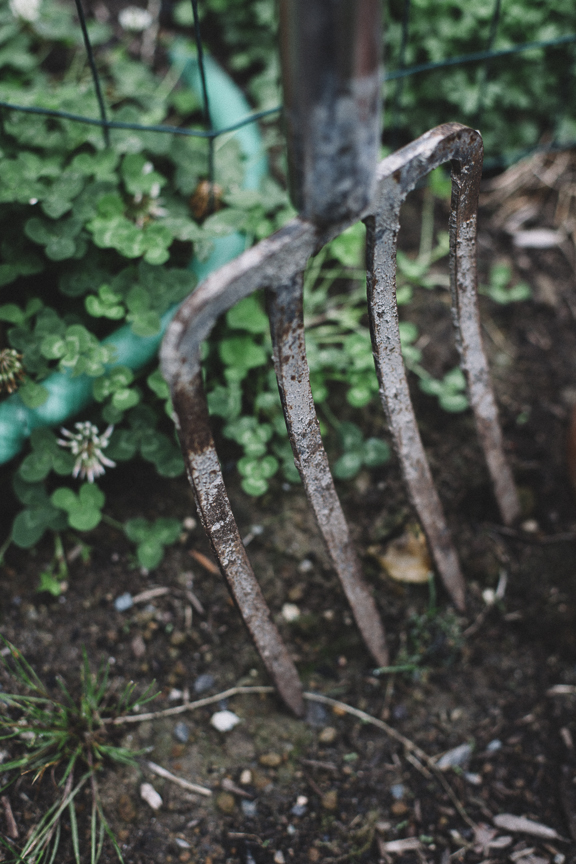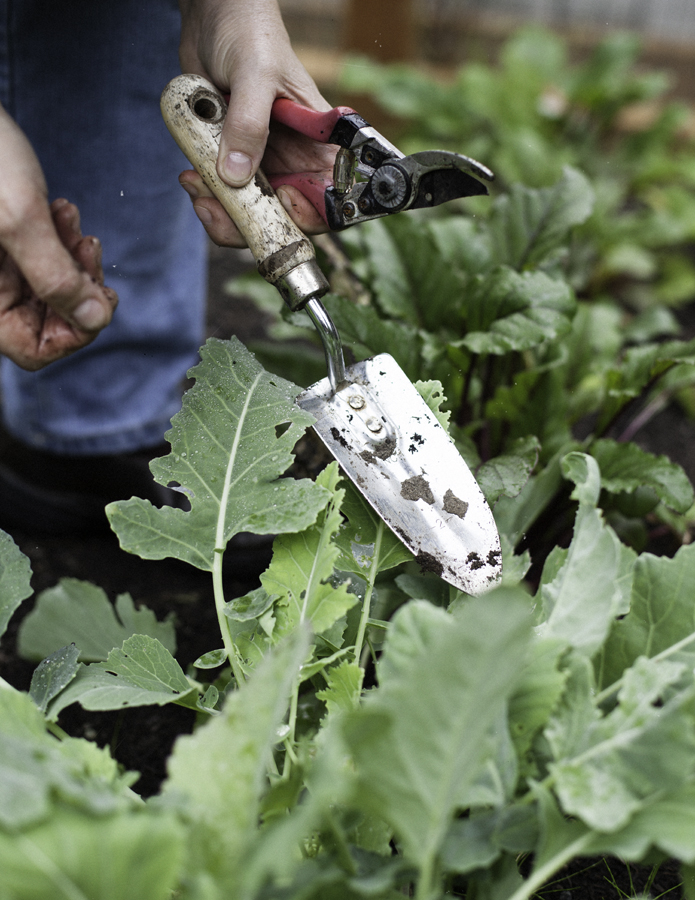Nothing has been on my mind more these past number of weeks than gardening. The start of the season is so exciting- placing seed orders, trips to the nursery, deliveries of dirt and endless planning in the garden journal. Another (not that I need another), excuse to place a million holds on library books and get lost reading...
My purpose for expanding the magazine into a blog is to create a place to share useful information, tips & resources with you. I want to provide you with what you need to know, to do what you want to do. And I thought, with the time of year, gardening would be a perfect topic to kick off with. So below I've rounded up a handful of time-tested rules for the start of the season. Nothing too crazy, and nothing too long to remember, just the core essentials to get you going. Part of helping and serving is to share resources- and boy are there some excellent ones out there. So read on and get ready for sunshine.
Over at Home Base
It's been busy at our place. I've dubbed our new garden "Honest Acres," because having a name gives it authority and makes it feel established and special- all things I'm hopeful for in this space. Growing something is one of the purest forms of joy and deepest connections to the greater earth we live in. There are so many benefits to growing a plant- the practice of nurture, having faith and being rewarded for it, watching hard work pay off, bearing witness to an entire cycle of life and, of course, your own crops always taste sweeter and your flowers bloom more beautifully when you've grown them with your own two hands.
I've always enjoyed growing things. From having a tiny, rocky plot with my sister next to our mom's on my parent's property growing up, to tending some long-forgotten bulbs hiding along the side of the 100 year old house I shared with eight roommates in college, to our first little bed my husband (then boyfriend) and I shared at our tiny apartment, installing wheels on the bottom so we could chase the fleeting sun around the patio throughout the day.
The garden has been a lot of work for us- we chose to go very big in an area that needed clearing (like, 100-year-old Cedar stumps clearing). You could do as much or as little as you like. From a seasonal herb garden in some pots on the porch or a window sill, to building and installing beds, to creating a trellised wonderland (like my neighbors). It's up to you and the opportunities are endless.
10 Tips For Starting A Successful Garden
1. You will kill something and it's okay
The number one thing I hear people say is they are afraid. Afraid to kill something they planted, afraid their seeds won't come up, afraid their carrots will look funny. And that's most likely all true, but it's not something to be afraid of. We all do this, it's a part of the process- call it "garden initiation" if you like. And it's really a right of passage you have to cross before you can harvest a boastful bounty. Like anything in life, it takes time to learn and make adjustments. If you're worried your seeds won't come up, plant extra. Think you'll kill your starts? Start more so you're more likely to have some make it. As for carrots- it happens to the best of us!
2. Choose a Good Site (or Pot)
When choosing your plot, make sure you're going to get great sun. Afternoon sun is hotter than morning sun so pay attention to that, as well as the trees and buildings that will cast shade as the sun moves across the sky, drainage of the soil and access to water. One of the most surprising things I learned (that makes perfect sense), is picking a pot the right size and shape to suit the root structure of your plant. My friend Amy Pennington taught me this in her fantastic book Apartment Gardening. Just like our own bodies, plants have root systems that are different sizes and shapes. Some are low and full and some are tall and lean. Choose appropriately and remember to leave plenty of room to grow.
*A side note for raised beds: It's awfully disappointing to go through all the work of setting up a beautiful bed and watching your plants explode into a lush wonderland, only to have pests sneak up from underneath and peter-rabbit your harvest. I've known many gardeners who got by for years, even decades, before suddenly being attacked by moles, voles, mice and rats. Stop those suckers in their tracks by installing metal hardware cloth on the bottom of your beds. Hardware cloth is a sturdy, less flexible roll of wire mesh with small holes that pests can't poke through but that allow for drainage and roots to pass through. Stapling hardware cloth with quarter-inch-sized holes to the bottom of your beds before filling with soil is a momentary delay that provides a whole lot of payoff.
3. Pay Attention To Your Soil
Second to getting great sun and making sure to water, is soil. The importance of soil cannot be understated and it's often completely ignored. If you're planting in raised beds or containers, you're generally bringing in soil and can select a suitable type for what you plan to grow. If you are gardening at ground level, testing your soil is invaluable. Many people skip it because it can cost around $50 and that sounds expensive, I know. But planting in poor soil or soil not well suited for your crops will cost you so much more in amendments, fertilizer and failed crops both in time and in $ than spending that $50 will. There is a lab that will do this for you and it's quite easy. If you have a well, you do something similar when you test your water each year. Gather some up into a little vial, mail, and get results. Then you can amend according to what you get back and what the crops you are putting in require.
4. Choose Crops In Your Favor
What you plant and the varieties you choose will greatly effect how well your plants do. Certain plants are native to the Amazon Jungle and thus, like Jungle environments. Others thrive in the sandy desert and get bogged down in wet soil. That said, there are many things you can do to give yourself the upper hand. Many species have specific strains that are bred for hardiness, and resistance to certain pests. For example, I have a fig tree and I live in the Cascade mountains where it snows in the winter and the ground is soggy most of the year before going into a drought in the summer. Figs are thought to be native to Jordan! Pretty different environments, but my fig thrives, mostly because I specifically picked a variety bred for Chicago, where winters are harsh. Pay attention when selecting seeds and starts and look for varieties bred for your environment or areas that share the same characteristics.
5. Use This Stuff
I hadn't heard of Endo Mycorrhizae until I got my fruit trees and it was mentioned in the paper planting packet they shipped with. A type of fungi, it's the "superfood" of new crops and transplanting. Sprinkling some onto the roots of large trees or shrubs when re-planting or a little tossed in with starts when moving to the garden helps give the plants a boost of energy and nutrients to eat to help them get established.
6. Fertilize!
Sooo many people don't fertilize. If you think about it, fertilizer is food for your plant. Just like our own little ones get extra hungry when they're going through growth spurts, so too do our plants. So give them what they want- a big helping of something extra-nutritious like Fish and Bone Meal. Yes, it does smell like you think it would (my husband is not a fan), but the smell dissipates with watering and time as it travels to the root systems and makes it way up into fertile leaves, flowers and fruits. Make sure to check the fertilizer's ratio to your plants. Different plants like different balances.
7. Don't just dump any old compost on there
Not all compost is created equal. Different plants need different amounts of nitrogen and other elements to succeed and too much or too little can burn, damage or kill. Not everyone knows that compost has to be balanced. A collection of kitchen scraps that have broken down do not necessarily have the right components for your garden. Of course, you can take this and add things (such as dry leaves), to create excellent garden compost, but it does take some consideration.
8. Plant a Cover Crop
Cover crops are one of the most overlooked, most essential things you can do for your garden. The original compost, farmers have long used cover crops to protect their soil's nutrients from being washed away in heavy winter and early spring rains. A few weeks before planting, take a shovel and break up the cover crop (it shouldn't be hard), to mix into the soil. As it decomposes, it will serve as compost and add nutrients to your soil. There are various cover crops from red wheat to fava beans, many of which are delicious in their own right. In addition to protecting from rain and serving as compost, different crops deliver different nutrients back into the soil so choose according to what you plan to plant.
9. Plant Flowers & Think about Beneficial Insects
Vegetables need flowers. People need flowers. So why not plant flowers!? Flowers attract beneficial insects that feed on the pests who wreak havoc on our gardens. Planting flowers in and around your vegetables and fruit trees is a great way to attract wildlife to your garden and protect your plants in a natural, low-maintenance way. Plus, who doesn't love flowers!?
10. Have Fun & Experiment!
Ultimately, a garden is a place of creativity and exploration. So try things! Plant that funky seed packet you picked up on your last road trip. Try something you've always been afraid to try, like artichokes or pumpkins. Mix your purple and orange carrots together and see what happens. Each time you try something new, you pick up things. It might not work out, or it might bred a new hybrid. You never know until you try, and the joy of silly experimentation and occasional success is infectious.
Resources
1. ENCLYCLOPEDIA BOTANICA PODCAST
by Hilary Dahl of Seattle Urban Farm Co.
The BEST gardening podcast...ever! I could listen to Hilary's clam, collected voice, inquisitive questions and clear explanations all day. Between interviewing guests from various seed companies and garden-related professions, to going in depth to explain different plant profiles, to topics such as seed collecting, open pollination and creating healthy soil, this podcast is a wealth of information and a valuable resource for anyone interested in the garden. Plus, I adore Seattle Urban Farm Co. (you'll see their book below).
2. FOOD GROWN RIGHT IN YOUR BACKYARD
By Colin McCrate & Brad Halm of Seattle Urban Farm Co.
This is the book I recommend to anyone just getting into gardening. Colin & Brad do a stellar job of outlining everything you need to know about starting a garden- choosing a spot, constructing a garden, watering, crops, pests, harvest, etc- and provide you with multiple ways to go about each so you can customize and work with the space and time you have. It's also home to some of the best charts I've come across for planting dates, fertilizing, succession planting, etc. And I very much enjoy the humor and conversational writing style. Published by Skipstone Press, an imprint of the Mountaineers Books, a company I've worked with and have immense respect for. They go out of their way to support and share people doing incredible things with integrity and sustainable practices so you aren't only supporting them and the authors but those they support as well.
3. THE TIMBER PRESS GUIDE TO VEGETABLE GARDENING IN THE PACIFIC NORTHWEST/MIDWEST/SOUTHWEST/SOUTHEAST/MOUNTAIN STATES/SOUTHERN CALIFORNIA
As you can tell, there is a version of this book for anywhere you live in the United States, except maybe Alaska. Published by another of my favorite publishers for foraging, gardening and natural history books, this comprehensive manual is organized by month, something I appreciate as no matter where you are in the year, there is always something that can or should be done for the garden. With an introduction to your particular climate in the beginning and an A-Z list of edible profiles in the back, it's a great way to stay on track and guide you through the year.
4. UNIVERSITY OF MASSACHUSETTS SOIL & PLANT NUTRIENT TESTING LABORATORY
This is a cool and very useful tool to have. The Lab at the University of Massachusetts Center for Agriculture, Food and the Environment offers testing services for soil. Just fill out one of the online forms, follow the instructions for collection, drop in the mail, and get your results. Knowing your soil's nutrient levels, soil acidity, environmental pollution, and toxic levels of lead or other heavy metals will keep you safe, save you money, and tell you exactly what fertilizers and lime to add to your soil.
5. TERRITORIAL SEED COMPANY
Territorial Seeds Co. is a wonderful, long-standing company with a solid reputation. You can find many standard varieties, beautiful varieties, organic varieties and some unique varieties on their site.
6. JOHNNY'S SEEDS
The go-to seed company for many professional gardeners, Johnny's supplies a hearty selection of reliably germinating seeds. With a nice selection of the basics, they extend a bit beyond your staple varieties and their prices are on point.
7. CUT FLOWER GARDEN
Cut Flower Garden by Erin Benzakein of Floret Flower Farm (below) has become the standard for learning how to grow a cut flower garden. The fact that the book is undeniably gorgeous doesn't hurt either. Whether you want a dreamy puddle of inspiration to drool over or a thorough technique-focused education, this book charmingly delivers.
8. FLORET FLOWER FARM
Floret is a well known, well established flower farm in the Skagit Valley of Washington State, just a couple of hours from us! Erin, the owner and founder of Floret, is a master at her craft and has been recognized far and wide for her cut flower garden book (linked above), her blog, and features in Martha Stewart. She holds immaculate flower workshops that, as you can imagine, sell out in an instant. Her shop sells seeds, bulbs and some top-of-the-line tools, though these sell out in a snap as well so be ready!
9. ENDO MYCORRHIZAE (The stuff that makes your plants grow strong)
Only a tiny amount of Endo Mycorrhizae is needed to sprinkle on transplants or add to the soil of existing plants. Found through many mail-order seed and nursery catalogs, you'll want to store in a dry, moderate-temperature place. Refer to the product instructions on quantity and implementation.
10. FISH & BONE MEAL
A chemical-free, nutrient rich option to fertilize. A great source of organic phosphorus and calcium, the option linked above works especially well with fruiting trees, as well as new garden beds, perennials and bulbs.
11. RAINTREE NURSERY
Excellent nursery for Pacific Northwest Native and hard to find varieties. This is my go-to for re-wilding my property and adding edible, native plants that are both sustainable and beautiful. They also specialize in unique crops such as the tea plant, goji berries, and more.














